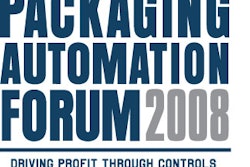
Packaging is tangible, quite honestly, to such an extent that words
can’t readily follow. For example, the typical purchase “decision”
takes merely 0.8 seconds at a grocery store. How much can any of us say
in such a narrow time frame to explain a given choice? Not much; maybe
a syllable or two will pass our lips.
Yet it’s that extreme gap between intuitive shelf-set decision and how
to cognitively and verbally account for consumer preferences that
bedevils companies eager to sell more products. Here then, is a
reasonably full account of the dilemma and how companies can get closer
to understanding consumer responses at a more intimate, accurate
level—and thereby get ahead of the competition.
Let’s start with the real business, not the “back to the basics” that
executives sometimes defensively evoke in a moment of disparate crisis.
The true, deep-down basic business statistic will be the universal
sensory bandwidth: people’s ability to see, hear, touch, taste, and
smell. Of these, humans’ ability to smell explains the origin of the
brain, a small node atop the spinal column to detect back when our
distant ancestors were on all fours, nose down, grubbing for food,
trying to detect by scent what was edible and what could get you killed
by ingesting it.
As it turns out, René Descartes had it only half right, at best. It’s
not that “I think, therefore I am” so much as “We sought to smell,
therefore, we think, and therefore we continue to shop in modern times,
relying on our senses to help us make rapid-fire, intuitive choices in
the store aisle.”
Visuals to the forefront
Once the species stood upright, visuals took over. Given the strategic
advantage of looking forward toward the horizon to spot potential
adversaries, visually oriented sensory process soon involved half the
brain. No wonder the masters of successful packaging are the eyes and
intuitive touch. While smell, taste, and hearing typically play a
lesser role in store—but one that should therefore all the more
encourage brainstorming on how to leverage those underutilized
dimensions of sensory bandwidth—sight and touch are always essential to
sales success. Awareness depends, after all, on noticing the packaged
product. Of the 11 million bits of information our senses are estimated
to take in every second, 10 million are visually based. Not to be seen
is to not exist, in commercial terms. If that is the case, then touch
must seal the deal. Touch is part of the intimate reality of love, and
the branded offer must romance the consumer.
From this introductory framework, you should begin to see (pun
intended) why traditional, conventional approaches to understanding
consumers’ likely and actual responses to the in-store shopping
experience so often fail. A cognitive, rational approach won’t get you
home. The rational part of the brain doesn’t enjoy first-moves’
advantage; that edge went to the sensory and emotional parts of the
brain, which are literally millions of years older. In other words,
those 3.5 pounds of “wetware” between our ears are the equivalent of
Microsoft Word 0.1 circa, on average, 300 million years ago!
Meanwhile, verbal input comes from the odd man out, the rational part
of the brain. To make matters worse, we live in a post-literate culture
in which it has been estimated that 20% of adults in the Western world
are functionally illiterate. They are able to use words, but not well
enough to really express themselves robustly. So research analysis via
the medium of language—questions asked, and answers dutifully
studied—is an insufficient approach to enhancing the in-store
experience and, more specifically, the packaging because rationality
isn’t where the decision lives.
To be a talented detective, a latter-day Columbo keeps poking around,
but focuses on the sensory-emotive connection instead. People feel in
one-fifth the time it takes them to consciously think, and the
subconscious sensory response is 99% of the game anyway, because only
25 to 40 of those 11 million bits of information get consciously
processed.
In other words, research that rests on the cognitive, Q-and-A level
inhabits Lapland, while the sensory impressions that feed emotional
responses are so numerous as to constitute China.
Noninvasive solutions
How to adjust to this relatively mind-blowing misdirection play that is standard research then becomes the business issue.
Fortunately, a pair of linked, non-invasive solutions already exists.
Now, note that I said noninvasive. Biometric tools like measuring pulse
rate, heart rate, putting an electroence phalogram (EEG) skull cap of
electronics on consumers’ heads, or shoving people into a brain scan
tube will always invite artifact. These are not natural activities. But
eye-tracking, whether done using a stationary machine with built-in
cameras to pinpoint eye movement or soon to be in a mobile setup,
provides a pathway to reading those 10 million bites of visual input
data that humans gather naturally per second. The sequence, duration,
and overall pattern of shoppers’ gaze activity can be calculated down
to one-twenty-fifth of a second to learn people’s response to in-store
displays and packaging, as depicted by the colored patches in the
accompanying photo of the front panel of a cereal carton.
Yet, eye tracking alone isn’t enough. The scientific verdict is in:
Over the past 20 years, the use of brain scans has confirmed what we
all know. We’re primarily emotional decision-makers, making gut-level
verdicts we then justify rationally to be defensively wise and socially
acceptable. Verbal input still has a role to play in research. It helps
us understand the justifications and thereby assists companies in
providing consumers with the “intellectual alibi” that supplements
decisions that will spur the truer, sensory-emotional connection with
today’s hurried, stressed, and generally option-saturated shoppers.
So, what’s the noninvasive tool that can tap into the emotional
response, a learning that’s crucial because business goals like loyalty
and recall are emotional rather than rational constructs? The answer is
facial coding. A century and a half ago, Charles Darwin was the first
scientist to take emotional considerations seriously. What helps each
of us can help companies, too, because the facial expressions by which
we most reliably express our feelings are so universal that even a
blind person does so in the same way. This occurs because emoting is
innate and universal, rather than socialized. Moreover, the spontaneity
essential to grasping and measuring consumers’ fleeting in-store
reactions is possible to gauge because the face is the only part of the
body where the muscles attach to the skin.
Facial coding can be used to better understand the consumer experience.
For instance, on one shopping trip, my company, Sensory Logic, observed
the reactions of other shoppers to the store layouts, products, and
staff service. Then starting three years ago, we began to synchronize
the videotaped and facially coded response of consumers to the equally
split-second, real-time data available from eye-tracking, too.
Together, it’s a one-two punch to record and unearth the look and feel,
and the awareness and consideration response process of consumers
across all sectors of the economy.
Simple, if not elegant
Here are some top-line summaries worth bearing in mind. Strive for
“elegant simplicity,” but if you can’t be elegant, at least be simple.
One key on-pack visual is best, and give the eye a clean, natural flow
through any of the supporting, less important design details. Next,
realize that time is short and anything lower in the field of vision
will—unless emphasized—likely not be noticed. Sadly for consumer
product companies, their design agencies love to avoid “spoiling the
design” by putting the branded solution, the logo, in the lower-right
corner of the package. I refer to this area as the “Corner of Death,”
because it’s typically the second-to-last place people look on
packaging.
Emotionally, what are the keys to understanding how consumers shop?
Faces. We’re all naturally facial coders and are drawn to the faces of
others. In my estimation, People will never go broke as long as the
magazine sticks to its wildly successful formula: the use of celebrity
photos, which allow us to peek into the lives of the reach and famous.
The faces that intrigue us engender a sustained and most likely
positive response. Those people we couldn’t care less about based on
their faces dissolve the opportunity for emotional momentum.
Boredom is a low-grade version of disgust. While disgust equates to
“bad taste” and causes our nose to wrinkle or upper lip to curl in
rejection, boredom signals “no taste”—a distaste in a marketplace
replete with choices.
“We’re good at figuring out what’s in it for us, but not the customer,”
one marketing director at a major pharmaceutical company once confessed
to me.
The few words on the package should translate readily into emotional
benefits for the consumer. But better than any words will be how touch
might help tilt the purchase decision in a company’s favor. Shapes can
intrigue, and weight can subconsciously convey superior value. Whatever
you might do, sacrifice messaging to avoid confusion, because the joke
that has to be explained is never as funny as the joke you innately get.
The author, Dan Hill, is the President of Sensory Logic
(www.sensorylogic.com), a consultancy that focuses on scientific
emotional insight. Hill specializes in the role of emotions in consumer
behavior. Contact Hill at [email protected].

























